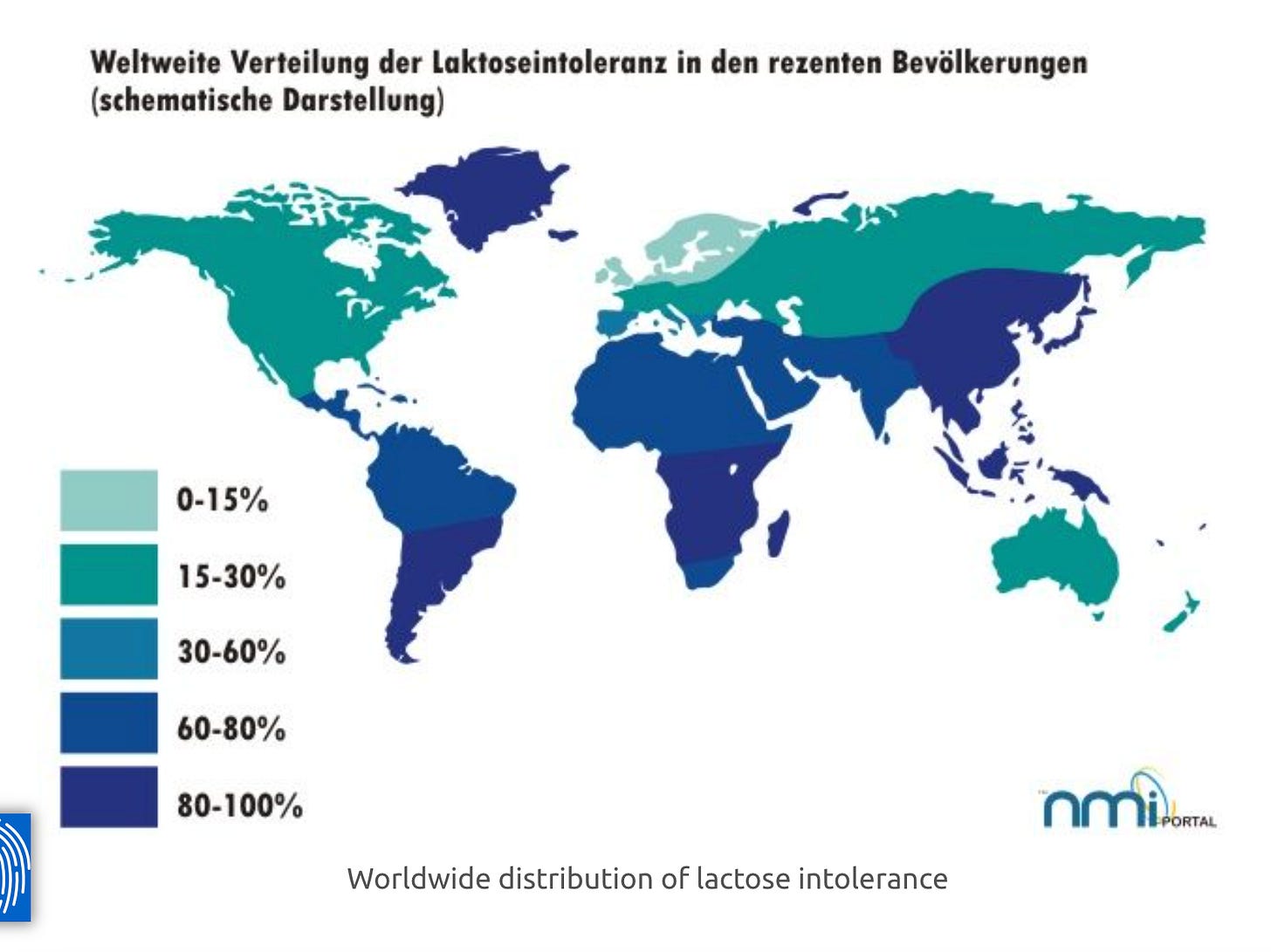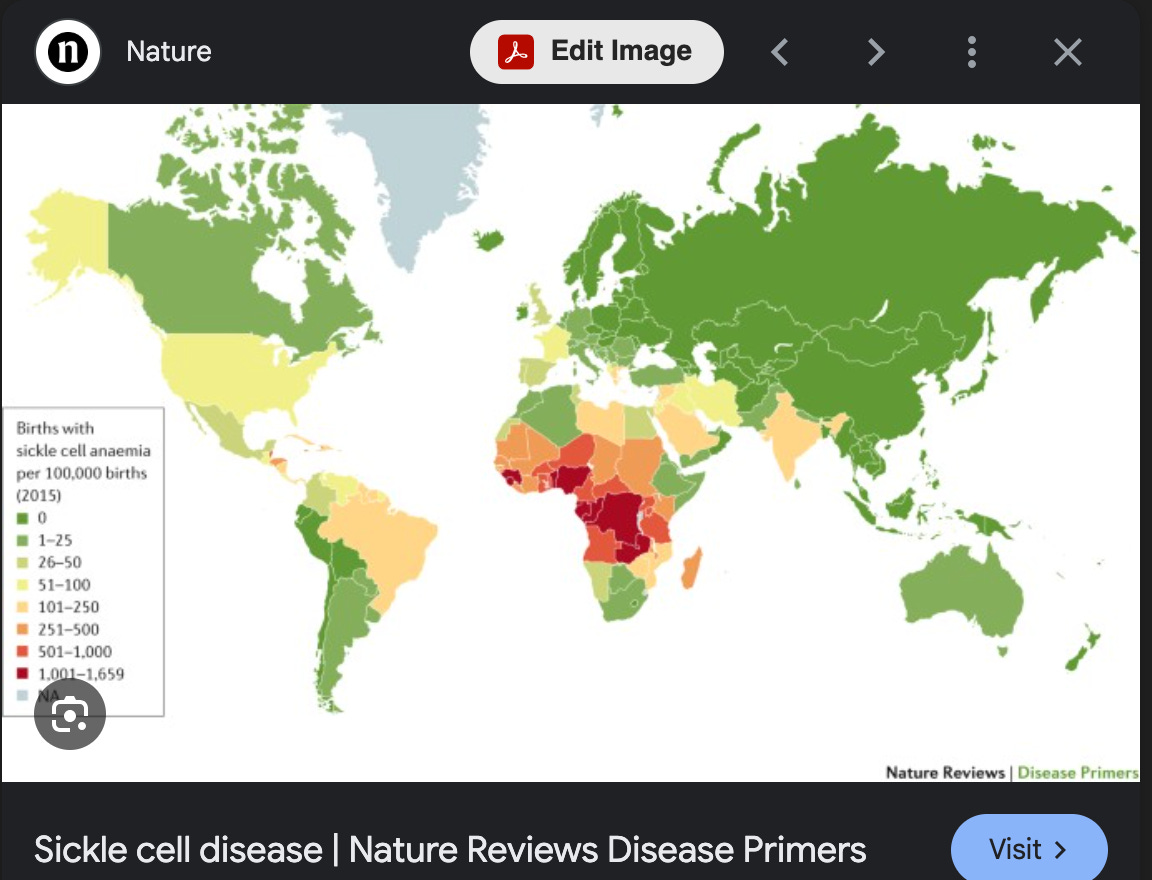Lala Land
Granted, most Race Does Not Exist diatribes are kinda dumb, but can a few highbrows vindicate them?
From Proceedings of the National Academy of Science:
Genes, culture, and scientific racism
Kevin N. Lala and Marcus W. Feldman
Kevin N. Lala, formerly Kevin N. Laland, is an extremely white-looking professor at the extremely white-looking U. of Saint Andrews:
But in middle age he changed his name that his Parsi father had Anglicized from Lala to Laland back to Lala to stick it to the Brits who had enabled his lineage to rise up from sweltering hellhole of Bombay to the home of golf.
Marcus Feldman is an Australian Jewish mathematician at Stanford who worked with L.L. Cavalli-Sforza, the famous Stanford population geneticist.
Cavalli-Sforza had the misfortune to get his M.D. degree from the U. of Pavia in northern Italy in 1944 and spent the next year doing research in Mussolini’s Republic of Salo. For most of his titanic career in race genetics, nobody much cared to inquire what he’d been ordered to work on by his Axis overlords, but following the publication of his titanic History and Geography of Human Genes in 1994, about which I’d written:
I noted in VDARE in 2000:
This is Cavalli-Sforza's description of the map that is the capstone of his half century of labor in human genetics: "The color map of the world shows very distinctly the differences that we know exist among the continents: Africans (yellow), Caucasoids (green), Mongoloids … (purple), and Australian Aborigines (red). The map does not show well the strong Caucasoid component in northern Africa, but it does show the unity of the other Caucasoids from Europe, and in West, South, and much of Central Asia."
Basically, all his number-crunching has produced a map that looks about like what you'd get if you gave Strom Thurmond a paper napkin and a box of crayons and had him draw a racial map of the world.
he got more worried about being cancelled and became a strident promulagator of the Race Does Not Exist coventional wisdom.
Back to Lala and Feldman:
November 18, 2024
Abstract
Quantitative studies of cultural evolution and gene-culture coevolution (henceforth “CE” and “GCC”) emerged in the 1970s, in the aftermath of the “race and intelligence quotient (IQ)” and “human sociobiology” debates, as a counter to extreme hereditarian positions.
As opposed to extreme blank slate conventional wisdom.
I, for example, have always rejected equally extreme hereditarian and extreme environmentalist positions. Has this made me more popular? No, actually, my reasonableness made me less acceptable because it was hard to depict me as a strawman extremist by quoting me at any length.
These studies incorporated cultural transmission and its interaction with genetics in contributing to patterns of human variation. Neither CE nor GCC results were consistent with racist claims of ubiquitous genetic differences between socially defined races.
Then again, arguing that nature and nurture were both important, much as I have, was a good way to get their careers cancelled. So, they hit upon the expedient of claiming that they were the good guys and I was the bad guy, for reasons. Which they had a hard time explaining, but that didn’t matter. What mattered was that they had somebody to throw to the wolves:
We summarize how genetic data refute the notion of racial substructure for human populations and address naive interpretations of race across the biological sciences, including those related to ancestry, health, and intelligence, that help to perpetuate racist ideas. A GCC perspective can refute reductionist and determinist claims while providing a more inclusive multidisciplinary framework in which to interpret human variation.
Scholars interested in race and ethnicity concur that human races are social constructs, and that there are no meaningful genetic differences between socially defined races. However, this belief is not held by the general public. Despite decades of public education, surveys show that people still regard race as a biological concept,
Why can’t the public not believe their lying eyes?
a belief linked to racist attitudes (9). That the scientific evidence—so clear to most academics—should fail to convince the public is a serious concern.
We suggest that this failure may be due to “mixed messages” emanating from within and outside academia that undermine the accepted scholarship that race is a social construct. This results in an intuitive but fallacious argument, summarized below:
People can use skin color and other easily observed anatomical features to allocate individuals to racial categories. These physical differences have a genetic basis, so it is easy to imagine that they are representative of human biology, and that genetic differences between races extend to less-visible characteristics, including temperament and mental ability. In addition, ancestry analyses, confirm that there are genetic differences between populations, while the medical community uses race as a disease-risk criterion, and links differences between populations to the incidence of medical conditions (e.g., stroke, heart disease). The dominance of particular races in some sports,
For unexplained reasons, the word “sports” never reappears in this long article.
and variation across races in scholastic performance, educational attainment, and IQ, is interpreted as reflecting biological differences. As a result, the assertion that races are social constructs may be regarded with suspicion, and viewed as politically motivated.
This argument is incorrect but disturbingly persistent and can incite racist actions. With racism and hate crimes on the rise and scientific racism again a concern, the situation today recalls that of 50 y ago, when Stanford professors Luca Cavalli-Sforza and Marcus Feldman first began exploring cultural evolution and gene-culture coevolution (CE and GCC). Below we describe how part of the original motivation for this work was to challenge strong hereditarian positions and crude genetic determinism. This 50th-anniversary special edition is an appropriate setting to attempt an authoritative statement on genes, culture, and race. Below we describe the historical context in which CE/GCC emerged, and how the field’s findings can illuminate race-related controversies and are incompatible with racism.
Eugenics and the Emergence of Gene-Culture Coevolution
In the first half of the 20th century, the orthodox belief among biologists was that most variation in human behavioral traits was due to variation in genes. Eugenics, either “positive” (i.e., increasing the fertility of people with “desirable” traits), or “negative” (reducing the fertility of those with “undesirable” traits) was accepted by mainstream science until the atrocities of Nazi Germany became widely known. For instance, it was not until 1954 that the leading journal of human genetic analysis, Annals of Eugenics, had its name changed to Annals of Human Genetics.
During this period the pursuit of eugenics in Europe and the USA was both racist and classist. Of particular relevance to biologists were Hermann Muller’s views on the potential accumulation of deleterious mutations (i.e., “genetic load”) in humans, and the concomitant need to improve the human gene pool.
The eugenicist Muller was an American part-Jewish Communist who moved to the Soviet Union in 1933. But Stalin came down in favor of blank slate Lysenkoism and Muller escaped Stalin’s murder factory in 1937. He won the Nobel Prize in 1946.
The discoveries by Harris and Lewontin and Hubby that human and wild fruit fly populations harbored large numbers of genetic variants at frequencies much higher than those expected of rare deleterious mutations led to a reevaluation of Muller’s load theory, and scientific explanations for the high levels of genetic variation found in natural populations became noneugenic in character. Nevertheless, eugenic accounts of the evolution of human societies have continued to appear in the social science literature.
Pre-World-War-II eugenic pronouncements on the genetic causes of race and class differences in behavior, achievement, and capabilities returned with a vengeance with Berkeley psychology professor Arthur Jensen’s Harvard Educational Review article “How much can we boost IQ and scholastic achievement?” Jensen used the high estimated value of the within-population statistic heritability to argue that such a large genetic contribution to measured intelligence made it impossible for interventions by society to reduce the IQ difference between the populations of White and non-White Americans.
How much has vast social spending succeeded in reducing the white-black IQ gap over the last 56 years?
While Jensen’s thesis appeared in a respected academic journal, the contemporaneous racist speeches by Stanford physicist William Shockley, who openly advocated eugenics, received much wider media attention. Both Jensen and Shockley were roundly criticized by most geneticists. The controversy was swiftly followed by the human sociobiology debate of the 1970s and 80s, and the publication in 1994 of Herrnstein and Murray’s The Bell Curve, which reignited the race and IQ debate.
This was the backdrop to the emergence of CE and GCC. Cavalli-Sforza and Feldman were disturbed by the publicity garnered by the writings and speeches of Shockley and Jensen, and set out to formulate a better way to compute statistics used to measure familial correlations, based on more-appropriate formal models of coevolutionary dynamics. Their first models showed that parent-to-offspring cultural transmission could produce the appearance of high heritability even though the transmission was not genetic, disproving Jensen’s claim that high heritability implied traits would be difficult to alter.
Wow, it’s almost as if traits are passed on both by nurture and by nature!
Paywall here.
Later, they constructed dynamic models incorporating both genetic and cultural inheritance and used a variety of methods that extended mathematical evolutionary theory. Other researchers, notably anthropologists Robert Boyd and Peter Richerson, contributed to the field’s early development and it has expanded rapidly over the past two decades, introducing a corpus of methodological and conceptual innovations. While we use the term “gene-culture coevolution,” these studies are also known as “cultural evolution,” “culture-gene coevolution,” and “dual-inheritance theory.”
Decades ago I corresponded with either Boyd and/or Richerson. I basically agreed with their implication that both nature and nurture were important, but they tended to be awfully indignant that I was being so reasonable and moderate when the point of their theory was that they were right because the other side was so unreasonable.
The best-studied GCC example is the coevolution of milk use with alleles that allow adult humans to digest lactose. Comparative and ancient-DNA analyses reveal that dairy farming appeared before the spread of lactase persistence alleles, generating conditions that made the production of lactase by adults advantageous. The spread of lactase persistence was shown to depend on the accuracy of cultural transmission. However, cultural adaptation to the absence of lactase persistence may also occur, such as the use of milk fermentation by Central Asian herders, illustrating the variety of outcomes possible under GCC.
In other words, humans tend to be highly biodiverse when it comes to lactose intolerance:
Lactose tolerance is more common in cultures that developed herding, which is due both to cultural development and to an accommodating biological environment, such as a lack of tsetse flies.
Genomic analyses suggest that gene-culture coevolutionary interactions may be common.
Gosh!
Many human genes have been subject to recent positive selection, often in response to culturally transmitted practices, which may have created environmental or dietary challenges, eliciting genetic change. For instance, starch consumption is a feature of agricultural societies, but most hunter-gatherers and some pastoralists consume less starch. Humans from different populations have different numbers of copies of the salivary amylase gene (AMY1), and copy number correlates positively with the amount of starch in the diet. A similar correlation arises with the domestication of rice and associated manufacture of rice wine in different regions of the world and the frequency of a variant of the alcohol dehydrogenase gene (ADH1B) that metabolizes alcohol more efficiently, but can make drinking less pleasurable. Associations are also found between the frequencies of alleles that protect against a variety of zoonoses or infectious diseases and population density. Such studies imply that human activities can modify natural selection thereby affecting inheritance and evolutionary dynamics, a phenomenon known as “niche construction”. Relative to other animals, the capacity for niche construction in humans is enhanced through a greater propensity for culture.
Wow. Like I never ever ever imagined any of this.
Gene-Culture Coevolution and Racism
Most GCC research concerns the coevolution of cultural activities that may be associated with panhuman genetic propensities, including individual and social learning, conformity, language, teaching, and various forms of cooperation. However, GCC studies have also investigated genetic variation among human populations and its coevolution with culture (e.g., the lactose absorption example). If different cultural activities can elicit genetic responses that differ between different human populations, does that imply that genetic differences between human races are possible?
You just said that that genetic differences, such as for lactose absorption, between different human populations are not only possible but exist.
On White supremacist websites, GCC works have been incorrectly claimed to support racist positions.
Interpreting GCC as supporting the existence of biological human races is a serious distortion. For instance, adult lactase persistence alleles reach high frequency in Northern Europe, East Africa, the Middle East, and parts of Asia, while in other regions of these continents, their frequencies are low.
Wow, it’s almost as if racists like Tom Buchanan (and, for that matter, F. Scott Fitzgerald) never suggested there were any differences between northern and southern Europeans.
This exemplifies a situation of genetic (and cultural) variation within socially defined races, and genetic similarities among populations from different continents. The same holds for the copy numbers of amylase genes which differ between different populations of the same socially defined race. Likewise, there are differences between human populations in the incidence of genetic disease that do not map onto racial categories. For instance, sickle-cell anemia is more prevalent in some African populations than others, but also occurs in some Asian countries where malaria is common.
It’s almost as if in America, sickle cell anemia is, while not utterly unknown among Greeks and Sicilians, is vastly more common among African-Americans.
In this case, genetic differences exist between culturally defined populations, but are not representative of the wider structure of human genetic variation. Any suggestion that there is a single common culture for each race is also problematic.
Contrary to the above, two books on the fringe of GCC appear to affirm the plausibility of human biological races, although neither utilized the models and methods of contemporary GCC, and neither left a legacy on GCC studies. The first is Lumsden and [Edward O.] Wilson’s (1981) Genes, Mind, and Culture,
I read this book but wasn’t much impressed with it.
… A major conclusion of contemporary GCC is that the causal interactions between genes and culture are bidirectional, and that the properties of culture do not reduce to genetic causes. …
… The second book is Gregory Cochrane [sic] and Henry Harpending’s The 10,000 Year Explosion, which made provocative claims about a genetic basis of high Jewish intelligence. Eschewing formal GCC theory, these authors claimed that, across Europe, Ashkenazi Jews were forced to be financiers, a cognitively demanding profession in which prosperous individuals would have higher fitness, and these cognitive demands generated selection for genes expressed in high intelligence. Through “back-of-the-envelope-style” calculations they estimated this process to have augmented Ashkenazi intelligence over a 1,000-y period, thus explaining why Ashkenazi Jews today have high average IQ scores. This speculation relies on several contestable assumptions, including low rates of interbreeding between Jews and non-Jews, strong selection, and high heritability of intelligence. The work has the quality of a “just-so story” and, in the context of its racist underpinnings, Cochrane [sic] and Harpending’s hypothesis is viewed with strong skepticism by GCC practitioners. There are more plausible explanations for Ashkenazi Jews’ high IQ that involve culturally transmitted norms concerning the importance of education.
What happened to your conclusion that:
A major conclusion of contemporary GCC is that the causal interactions between genes and culture are bidirectional








What is notable in these kinds of undertakings is that they are never interested in just figuring stuff out. They never say "of course these are interesting questions, here are the major plausible explanations, let's look at the evidence for each and see where we get". They start out from "bad people keep talking about this explanation, here's a whole book / article / talk about why it is wrong". The original interesting question just gets lain aside, but it's still interesting so of course people still keep returning to it.
It seems like they reached their desired conclusion first.